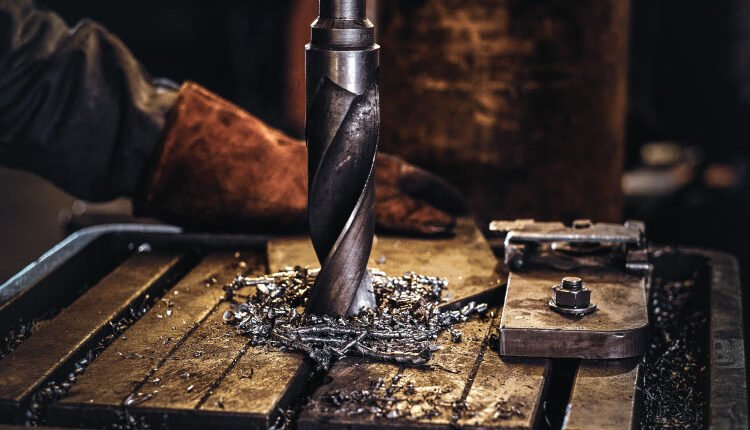Metal cutting is a fundamental process in manufacturing, shaping raw materials into precise components used in industries such as automotive, aerospace, energy, and general engineering. As global competition intensifies and customer demands evolve, productivity in metal cutting has become a defining factor for operational success. This article explores the crucial aspects influencing productivity in metal cutting and the latest advancements that are shaping the industry.
Understanding Metal Cutting and Its Importance
Metal cutting is the process of removing unwanted material from a workpiece using a cutting tool. It encompasses operations such as turning, milling, drilling, and grinding. The efficiency of metal cutting is directly linked to productivity, influencing cycle time, cost per component, and overall profitability. Several factors determine how effectively a metal cutting operation is performed, including the choice of cutting tool, machining parameters, and the condition of the machine tool.
Key Factors Affecting Productivity in Metal Cutting
1. Cutting Tool Selection
The type of cutting tool used plays a pivotal role in productivity. High-performance carbide, ceramic, cubic boron nitride (CBN), and polycrystalline diamond (PCD) tools offer superior wear resistance and allow for higher cutting speeds, reducing machining time significantly. The geometry of the tool, including rake angle, clearance angle, and nose radius, also influences chip formation and cutting forces.
2. Cutting Speed, Feed Rate, and Depth of Cut
Optimizing cutting speed, feed rate, and depth of cut can drastically improve productivity. While increasing cutting speed enhances material removal rates, it also raises tool wear, requiring a fine balance. Adaptive control machining systems help maintain the right balance, automatically adjusting parameters to maximize tool life and efficiency.
3. Workpiece Material and its Machinability
Different materials exhibit varying levels of machinability. Soft materials like aluminum allow for higher cutting speeds, while hard materials such as titanium and Inconel demand specialized tooling and precise machining strategies to maintain productivity. Proper cooling and lubrication further assist in improving surface finish and tool life.
4. Machine Tool Stability and Accuracy
The performance of a metal cutting process is highly dependent on machine rigidity. High-speed machining centers with robust structures and vibration-damping capabilities help achieve precision while enabling aggressive cutting conditions. CNC technology has also revolutionized productivity by automating tool changes, optimizing tool paths, and reducing human intervention.
5. Metal Cutting Fluids
Effective cooling and lubrication reduce heat generation and improve surface quality. Advanced cutting fluids, including synthetic and nano-enhanced coolants, improve chip evacuation and extend tool life, directly contributing to higher productivity. Dry machining and minimum quantity lubrication (MQL) techniques are gaining traction due to their eco-friendly advantages and cost-effectiveness.
Technological Innovations Boosting Productivity
1. High-Speed and High-Efficiency Machining
High-speed machining (HSM) has transformed metal cutting operations by enabling faster material removal without compromising precision. This is achieved through advanced spindle technology, lightweight tool holders, and vibration-dampening mechanisms. HSM reduces cycle times significantly, particularly in industries like aerospace, where large-scale material removal is common.
Modern high-efficiency machining techniques, such as trochoidal milling and dynamic milling, improve tool life and productivity by maintaining a consistent chip load. These methods enable high-speed cutting while minimizing heat buildup and tool wear. Multi-axis CNC machines further enhance efficiency by reducing setup times and eliminating multiple operations.
2. Industry 4.0 and Smart Manufacturing
The integration of digital technologies is revolutionizing metal cutting. Industry 4.0 enables real-time monitoring and optimization of machining processes through AI-driven analytics and Internet of Things (IoT) sensors. Smart manufacturing systems collect and analyze data, allowing manufacturers to predict tool wear, prevent machine failures, and improve process efficiency.
For example, adaptive machining systems adjust cutting parameters automatically based on real-time feedback, ensuring optimal cutting conditions. Digital twins—virtual simulations of machining processes—help manufacturers test different scenarios before actual machining, minimizing errors and waste. These innovations lead to greater precision, reduced downtime, and overall higher productivity.
3. Cryogenic Machining and Advanced Cooling Systems
Traditional cooling methods using flood coolants have limitations, particularly when machining heat-resistant materials like titanium and nickel-based alloys. Cryogenic machining, which involves using liquid nitrogen or carbon dioxide as a coolant, offers a revolutionary alternative. It drastically reduces thermal stress on cutting tools and workpieces, allowing for higher cutting speeds and extended tool life.
Cryogenic cooling minimizes tool wear and enhances surface integrity, making it especially beneficial for aerospace and medical applications where precision and material properties are critical. Some manufacturers are integrating hybrid cooling systems that combine cryogenics with minimum quantity lubrication (MQL) for optimal efficiency.
4. Hybrid Machining Techniques
Hybrid machining combines conventional metal cutting processes with advanced techniques like laser, ultrasonic, or additive manufacturing to enhance machinability and productivity. Some key hybrid machining technologies include:
Laser-Assisted Machining (LAM): This technique uses a laser to preheat the material before cutting, reducing cutting forces and improving chip evacuation. It is particularly useful for machining superalloys and ceramics.
Ultrasonic-Assisted Machining (UAM): UAM superimposes high-frequency vibrations onto the cutting process, reducing tool wear and improving surface finish. This method is effective for brittle materials like composites and hard metals.
Additive-Subtractive Hybrid Manufacturing: By combining 3D printing with CNC machining, manufacturers can create complex geometries with high precision, reducing material waste and lead times.
Future Trends in Metal Cutting Productivity
The future of metal cutting will witness further advancements in automation, artificial intelligence, and sustainable machining practices. Digital twins—virtual replicas of machining processes—are being developed to optimize tool paths before actual machining begins. Additive manufacturing, although not a direct competitor to metal cutting, is being integrated with subtractive techniques to create hybrid manufacturing environments that maximize efficiency.
Sustainability will play a key role, with increased adoption of eco-friendly cutting fluids, energy-efficient machining, and closed-loop recycling of metal chips. As the industry moves toward smart factories and data-driven manufacturing, companies that embrace these innovations will remain competitive and achieve superior productivity in metal cutting.


